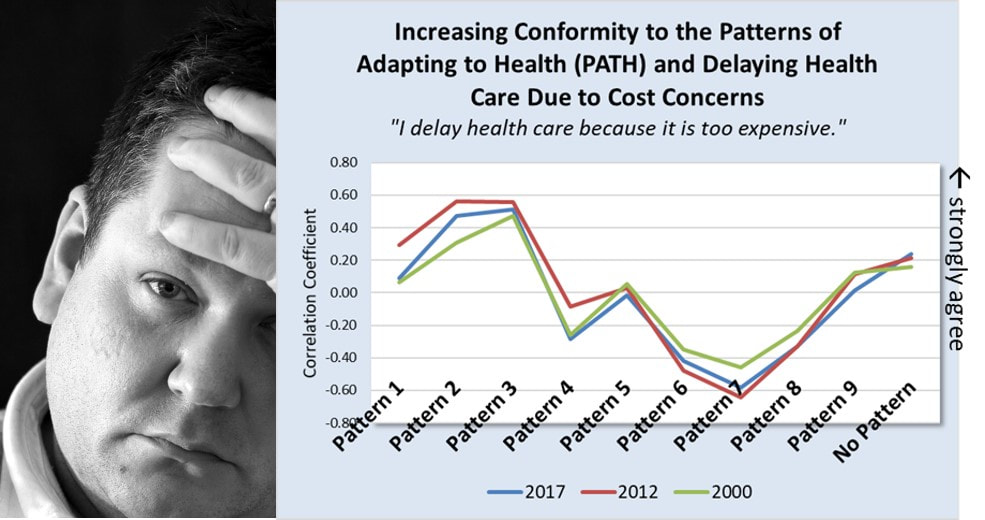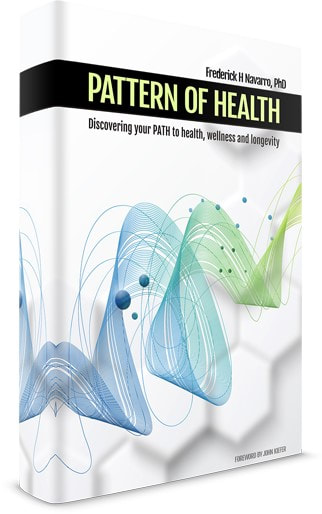|
The Research. Three different studies across multiple years (2000, 2012, and 2017) and different adult populations showed that as adult’s health behavior is dominated by Patterns 1, 2, 3, and 9 their delay of health care due to worries about costs is strong. In contrast, as adult’s health behavior conforms to Patterns 6, 7, 8, and to a lesser extent Pattern 4, health care seeking is not delayed over concerns about the expense.
Conclusion. An adult’s increasing conformity to the nine Patterns of Adapting to Health (PATH) is a direct and stable predictor of his or her tendency to delay health care or not because of concerns about health care costs. Implications. In spite of the changing mechanisms of financing health care delivery over the past 17 years, a person’s decision to delay or not delay health care due to cost concerns have remained stable and reliably predicted by their dominant pattern of adapting to health (PATH), irrespective of changes in the actual costs themselves.
0 Comments
Leave a Reply. |
AuthorFrederick H. Navarro, PhD. Archives
March 2019
Categories |
|
Copyright © 2017 PATH Institute
|
Website by RyTech, LLC
|


 RSS Feed
RSS Feed

